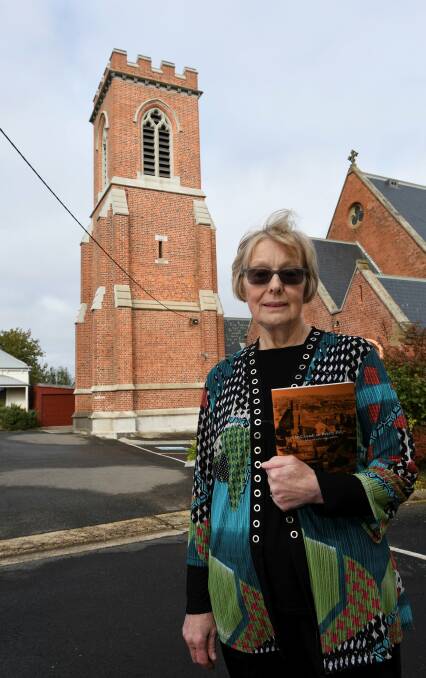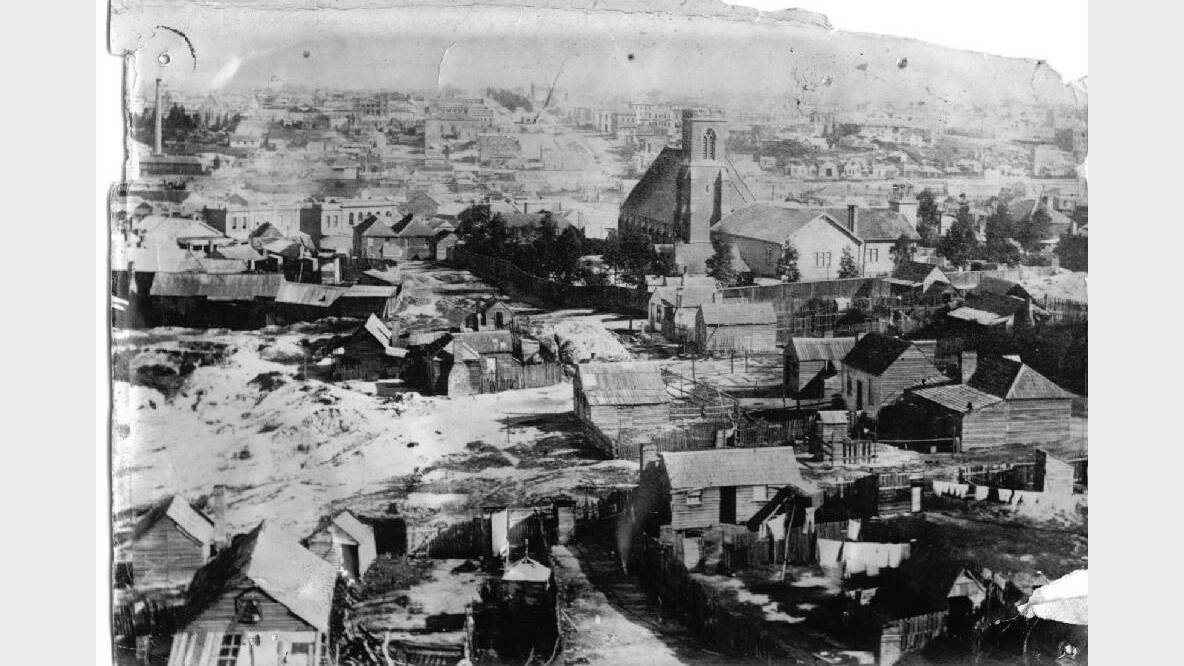
With a history of lofty ideas, eccentric clergymen and moments of devastation, St Paul’s Church at Bakery Hill has just been waiting for someone to dive into the archives.
Subscribe now for unlimited access.
or signup to continue reading
Historian Dr Anne Doggett has just released The Church on Bakery Hill, a chronicle of the church’s more than 150 year history.
First housing parishioners in a tent on the Humffray Street site, the first wooden church was built March 1855, and was the first of three different churches to occupy the church yard.
Catering to the working class Anglicans of the goldfields, in the year the church opened there were 145 Church of England marriages.
But the church was built on unstable land due to mines, with the church going to court to stop the digging. Only two years after a brick church was finally erected on the site, disaster struck.
“This land where the church was built was really heavily gold-mined, and there a lot of shafts around,” Dr Doggett said. “Even when they had their schoolhouse, they had a big shaft on the grounds which they thought was very dangerous.”
A major storm in 1864 brought the only two year old church to the ground.
After this big storm, they came to check on the church to see that they’re been no storm damage, they found the two side walls were completely cracked. It was just far too dangerous
- Dr Anne Doggett
“The rain had got into the underground drivers and the land had subsided and caused all this cracking.”
But the tower remained strong, and was connected to the new brick church constructed on the site in 1865. It was designed by renowned architect Leonard Terry, who created many of Lydiard Street’s old bank buildings, but was not his first sketch.
“Terry designed a two-storey church, which never came to fruition. He had the school on the bottom, and the church on the top,” Dr Doggett said. “It would have been rather an unusual sort of a church, so they didn’t like the idea at all.”
While the church has physically had some interesting changes, those inside were often full of character.
“They’ve had some unusual and eccentric people over the years,” Dr Doggett said.

In 1963, Canon Lewis Langdon began at St Paul’s. His hardworking manner was abutted by an “unusual sense of humour”.
Growing up in Wales he learnt water divining, and as a result became highly sought after by drought-stricken farmers.
“Once pulled over by the police for a minor traffic infringement, he startled the police officer with his ready response: “You can’t speak to me like that, I’m a man of the cloth!” the novel recounts.
Dr Doggett said the book reflects St Paul’s position as a reflection of society.
“From the early years of the gold rush, through the World Wars and Great Depression, to the post-war and modern era, St Paul’s role in the community has evolved in ways that reflect broader societal and community changes,” she said.
Those interested in purchasing a copy can contact Dr Doggett at adoggett@optusnet.com.au














